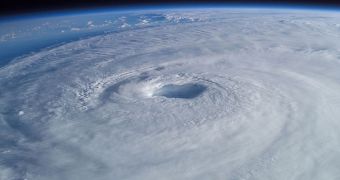Investigators have recently determined that climate change is also exerting its influence on the way tropical cyclones develop, by modifying the mean temperatures of the oceans. This means that the threshold future storms need to reach in order to develop is moving up on the temperature scale.
Hurricanes, tropical storms and typhoons can only develop when they pass above seawater that is how enough to allow for them to start swirling. If the ocean is cool, then there is a very small chance that the weather will get nasty.
In effect, hot water acts as fuel for these storms, augmenting their might until they become extremely dangerous for humans lying in its path. With climate change, seas get warmer, which means that the threshold determining how hot the water need to be in order to allow for the development of dangerous storms is also going up.
As a direct result, experts predict that future hurricane seasons will feature about the same number of tropical cyclones, but that the storm which will develop will be considerably stronger and more intense than current ones.
“It is too difficult to say how our results relate precisely to the number of hurricanes, but our results do suggest that rising sea surface temperatures alone should not appreciably affect the number of tropical cyclones,” explains researcher Nat Johnson.
“However, most tropical cyclone studies do project that the total number of tropical cyclones will change little but the number of intense tropical cyclones will increase,” adds the expert, who holds an appointment at the University of Hawaii in Manoa (UHM) International Pacific Research Center.
Tropical storms develop best when sea surface temperatures exceed 78 to 82 degrees Fahrenheit (26 to 28 degrees Celsius). Powerful thunderstorms develop as a result, and they are the main engine of the cyclone.
Over the last three decades or so, the hot water threshold has been increasing constantly, by about 0.1 degrees Celsius every ten years. The findings belong to a new study, which appears in the November 7 online issue of the top scientific journal Nature Geoscience, Our Amazing Planet reports.
“The correspondence between the two time series is rather remarkable. The convective threshold and average sea surface temperatures are so closely linked because of their relation with temperatures in the atmosphere extending several miles above the surface,” Johnson explains.
“Other factors such as changes in the winds high in the atmosphere or changes in the regions where moisture converges could impact the number of hurricanes,” the expert concludes.

 14 DAY TRIAL //
14 DAY TRIAL //